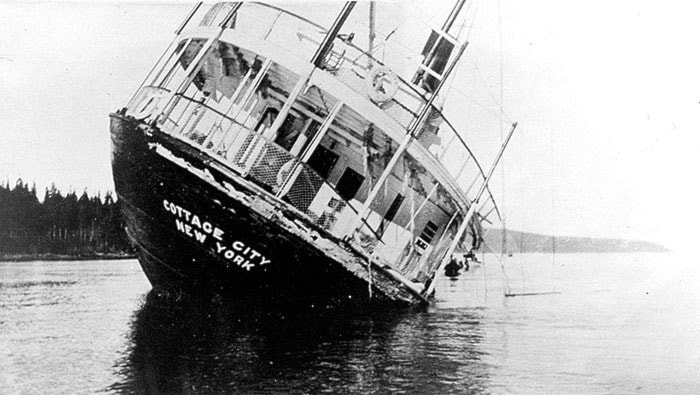Many of us who live in Campbell River and on Quadra Island look at the Discovery Passage every day.
But how well do we really know it?
The Museum at Campbell River has created a new temporary exhibit to tell the story of this marvellous natural waterway, and to give us a glimpse of what lies beneath the waves.
A beautiful but dangerous passage, this marine highway has swiftly flowing tides that surge through narrow spaces to create currents that have been known to sink many ships.
The rapids at Seymour Narrows, even after the destruction of Ripple Rock, can still cause trouble for those unfamiliar with navigating these waters.
Despite the danger, people have been using the passage for thousands of years as a strategic home base, and the coast here was once populated by hundreds of First Nation’s villagers, living off the abundance of the sea.
Explorers arrived from Europe in 1792, then by 1860, detailed surveys were being made of the coast.
The outlying islands were first populated by settlers in the late 1800s, and Campbell River, a settlement without a natural harbour, remained a small village for many years.
Then in the 1950s, when hydro dams and the power they produced presented opportunities for increased industry, the population grew dramatically.
With that was a subsequent increased need for services, housing and better harbour facilities. In that same era, Union Steamships stopped servicing the Discovery Islands, and Campbell River became the hub for marine traffic.
Always critical to this coastal community has been the abundant sea life that thrives offshore and provides outstanding fishing opportunities and wildlife viewing.
Featuring a detailed account of the explosion of Ripple Rock, stories of shipwrecks, stunning underwater photos by Eiko Jones and an interactive map display, this exhibit is sure to fascinate and inform people of all ages.
Come discover the Passage, where the waters are deep and much of the history is buried beneath the waves.
The Museum’s summer hours are now in effect and it is open daily from 10 a.m. to 5 p.m.
